Any links to online stores should be assumed to be affiliates. The company or PR agency provides all or most review samples. They have no control over my content, and I provide my honest opinion.
2025 UPDATE: With us having a particularly warm heat wave in the past week, I thought it would be a good time to refresh my post on the running cost of portable air con units.
This was originally written in 2021, when electricity was still relatively cheap (I was paying less than 14p/kWh). Times have changed, lockdowns lifted, and a war started. I then updated the article in May 2022 when the variable rates had jumped to 28p/kWh.
Things worsened; by October, it was predicted that prices would increase by another 80%, prompting the government to intervene with the Energy Price Guarantee (EPG). In the end, the price cap per kWh peaked at 67.5p/kWh in January 2023.
Prices have dropped significantly since then, but it would seem that the days of cheap electricity are gone. As of July 2025, the price cap is 26p/kWh, and it is worth noting that the standing daily charge is now 51.37p, while this is the cheapest it has been since 2023. Back in 2021, we were paying less than half of this.
Electricity Price Cap History
Cap period start | Cap rate | Electricity per kWh | Daily charge |
Jul-25 | £1,720 | 25.73p | 51.37p |
Apr-25 | £1,849 | 27.03p | 53.80p |
Jan-25 | £1,738 | 24.86p | 60.97p |
Oct-24 | £1,717 | 24.50p | 60.99p |
Jul-24 | £1,568 | 22.36p | 60.12p |
Apr-24 | £1,690 | 24.50p | 60.10p |
Jan-24 | £1,928 | 28.62p | 53.35p |
Oct-23 | £1,923 | 27.35p | 53.37p |
Jul-23 | £2,074 | 30.11p | 52.97p |
Apr-23 | £3,280 | 50.60p | 52.97p |
Jan-23 | £4,279 | 67.47p | 46.36p |
Oct-22 | £3,549 | 51.89p | 46.36p |
Apr-22 | £1,971 | 28.34p | 45.34p |
Oct-21 | £1,277 | 20.80p | 24.89p |
Apr-21 | £1,138 | 18.95p | 24.89p |
Oct-20 | £1,042 | 17.19p | 24.38p |
Apr-20 | £1,126 | 17.81p | 24.38p |
Oct-19 | £1,179 | 17.85p | 23.51p |
Apr-19 | £1,254 | 18.56p | 23.42p |
Jan-19 | £1,137 | 16.52p | 22.77p |
Recommended Portable Air Conditioners
How much does a portable air conditioner cost to run?
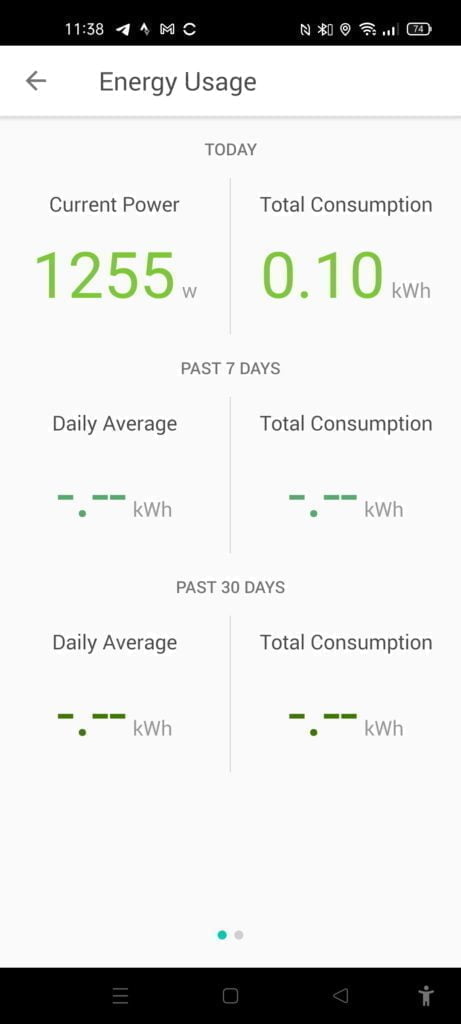
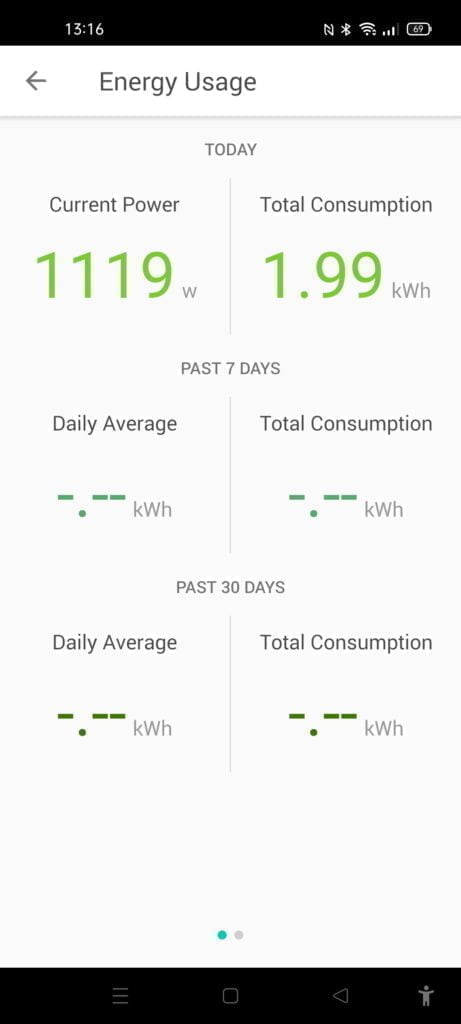
The main concern with air conditioning is the cost to run it. The power consumption will vary depending on the cooling capacity of the unit. This typically ranges from 1Kw to 1.3kW for air-con units rated from 9000 to 12000 BTU.
The Inventor Magic I used was rated at 1350W per hour for cooling. Actual usage appears to vary between 1100W and 1300W, and this seems to average out at 1200W while it is running full blast.
Cost to run an air conditioner in 2025
Just to make myself feel a bit depressed, I have left the older tariff examples:
- 2021:
- SO Energy: 13.6476p/kWh
- 2022 (May, Variable Tariffs)
- Bulb: 28.0203p/kWh
- British Gas Standard Variable: 28.021p/kWh
- 2022 Energy Price Guarantee (EPG): average price of 0.3242p/kWh
- From July 2025:
- Octopus: 26.61p/kWh
- Standing Charge:47.89p
Based on the above prices, in 2021 it was costing me 16.38p per hour to run, and in May 2022, it would cost 33.60p or a 105% price increase.
Based on the rates I am paying with Octopus in August 2025, it costs approximately 32p per hour to run.
While the per-hour running costs don’t look that bad, this uses about the same electricity by itself as the rest of my house (apart from when I cook), and the costs will add up quickly.
My overall opinion hasn’t changed about them. If you plan to leave one of these on all day, then you are in for a bad time when you get your energy statement. Of course, the air con will switch off when it reaches the desired temperature (and back on), so you may not be running it all the time.
Air conditioners were always expensive to run, and being a tight-fisted northerner, I would never run one all day. However, when it is painfully hot outside, and my office is touching 30 degrees, or my bedroom is 23+ degrees, I think spending just under £1 running an air-con for three hours is still worth it. They are very noisy anyway, so I’d prefer to have them running as little as possible.
How quickly does an air-con cool a room?
This will depend on the cooling capacity of the air con.
When I used the Inventor Magic with a 12000 BTU cooling capacity it was able to reduce the temperature in my office from 27 degrees to 21 degrees in 2 hours 15 minutes, and it used 2.5kW of electricity.
My office is 4.5m x 3.5m and is 2.5m high, so just shy of 30m3.
I ended up sending that air con back, as it was too large for me to store anywhere and my windows open from the bottom which makes creating a seal difficult.
I later reviewed the EcoFlow Wave 2, which is compact with a 5100 BTU cooling capacity. This is not designed for home use but for off-grid living like caravans, boats and vans. However, the 5100 BTU cooling capacity is just enough for the spare bedroom I sleep in when I struggle to get to sleep. This is 2.5m wide, 4.5m long, and 2.5m high and I had to create a makeshift window seal and vent using some cardboard.
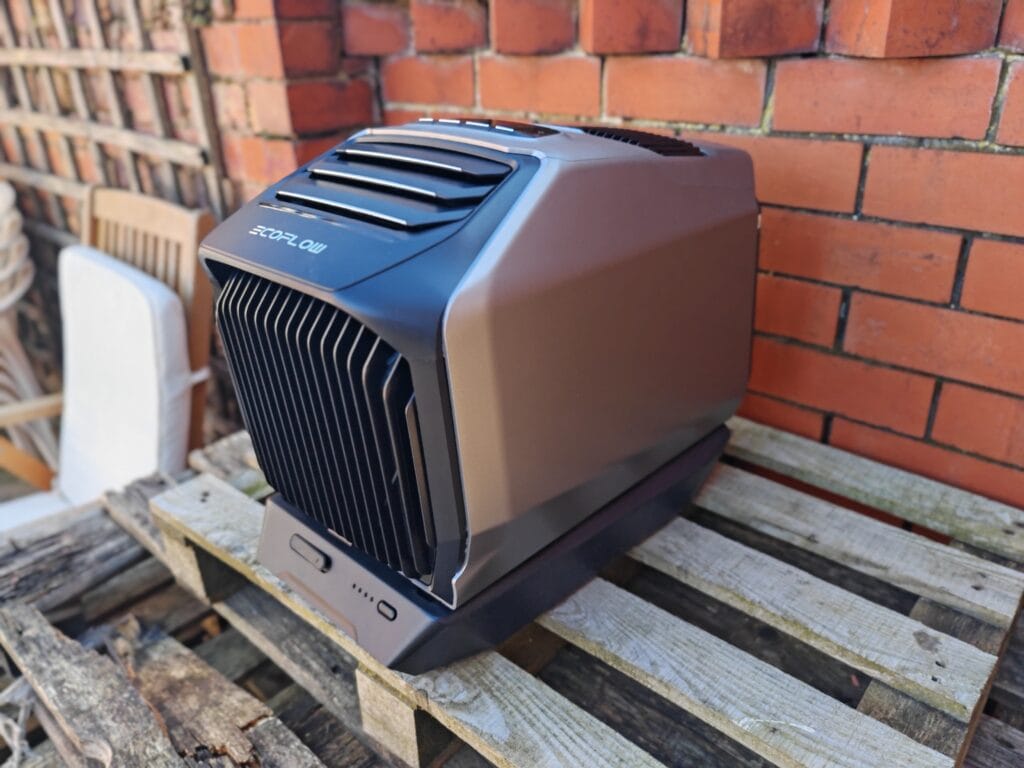
With this air con, I am able to cool my small room from 25 degrees to 19 degrees in about 3 hours or so. Due to the lower cooling capacity, it only draws about 400W (it is rated up to 500W).
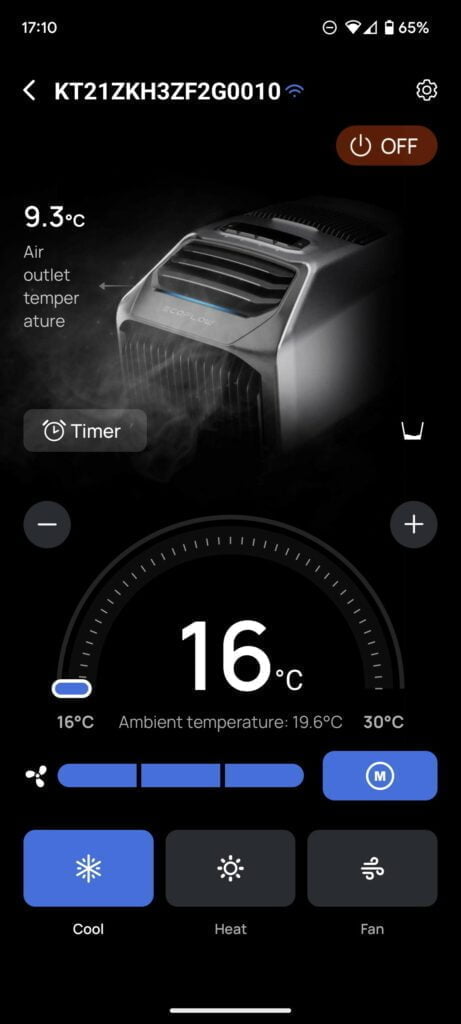
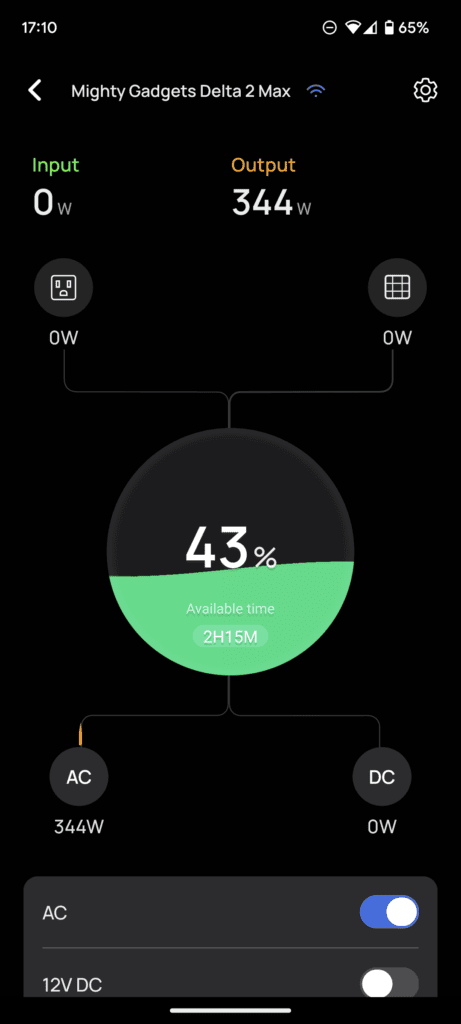
How loud are portable air conditioners?
Really quite loud. When I reviewed the Inventor Magic, I didn’t have an accurate sound meter, but using my phone, it read 40-50 dB with the air-con just off to the side of me. It is officially rated at 54 / 54.3 / 54.5 dB(A) for low, medium and high.
The sound profile isn’t too bad. It is not high-pitched and just sounds like a fan at high speed. I can cope with it being switched on in the office, but there is no chance in the world I could fall asleep with it on.
The Ecoflow Wave 2 is rated at 48dB for eco, 52dB for sleeping mode and 58dB. Subjectively but confidently, I would say it is significantly quieter than the Inventor Magic. I think some companies are a bit generous regarding noise level readings.
With the Ecoflow Wave 2, it is still too loud to sleep with, and the Eco mode isn’t powerful enough to keep the room cool throughout the night.
I, therefore, cool my bedroom to make it easy to get to sleep, then use a fan for the rest of the night.
How large are air conditioning units?
They obviously vary a lot depending on their rating. The Inventor Magic 12000BTU is one of the higher-rated models out there and, therefore, physically large.
It is probably about as tall and wide as an under-counter fridge but less deep. It weighs 35 kg, so it wasn’t all that fun carrying it up the stairs by myself. If you keep it on the same floor, it is not too bad as it is roller wheels on it.
The Ecoflow Wave 2 isn’t small, but it is a much more convenient size and weight (14.5 Kg)
How easy is fitting a portable air conditioner hose through a UK uPVC window?
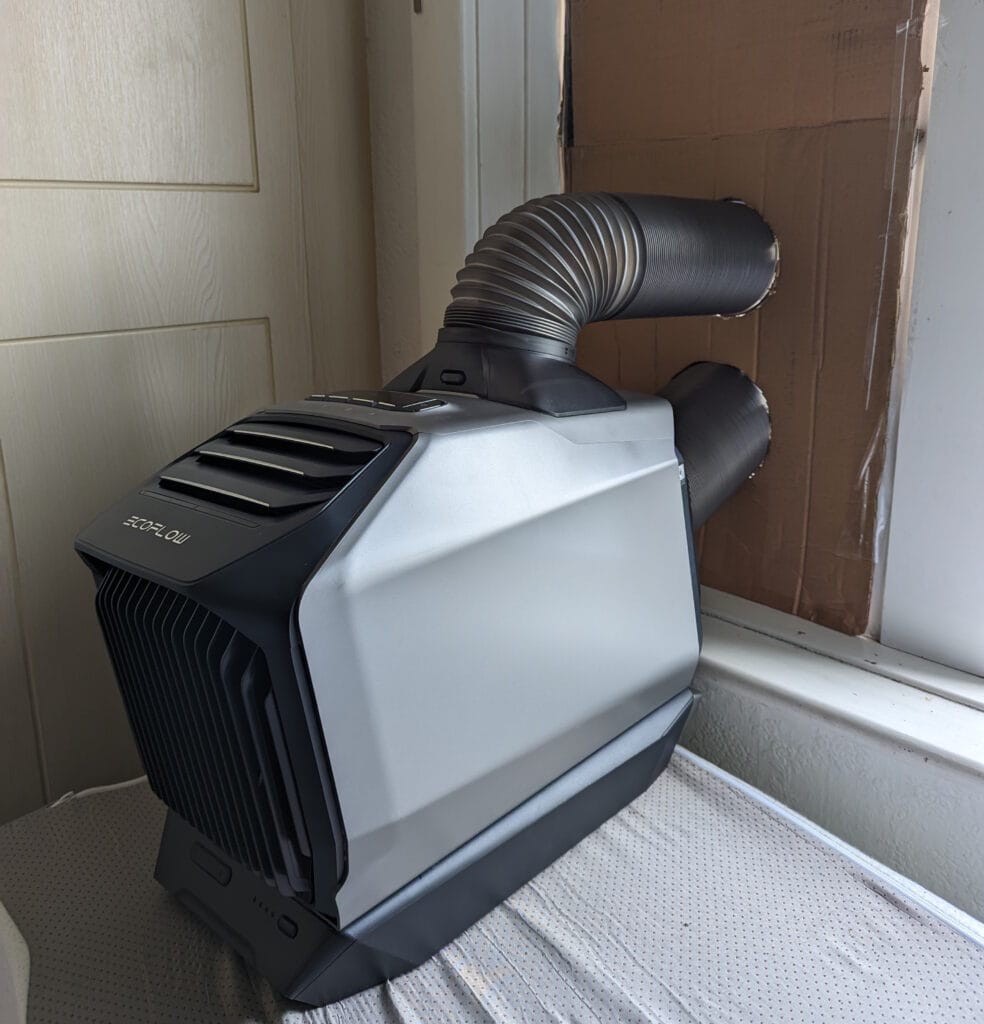
Fitting a portable air conditioner hose through a UK uPVC window is generally straightforward, especially with the right accessories — but, from experience, there are a few practical quirks to consider depending on your exact window style.
The Inventor Magic 12000BTU comes with a windows kit, but this appears to be for sash windows (the traditional windows that slide up).
I have uPVC windows that are top-hung, which is, therefore, not compatible. There are various kits you can buy on Amazon, which are bits of cloth with zip and velcro that stick around the gaps in the window. From my brief experience with them, they are a bit rubbish, and I am very sceptical of the large number of Amazon reviews some of them have. Unfortunately, this seems like the best solution, certainly for temporary use. It is far from ideal, and they are quite ugly, but it is what it is.
For me, I resorted to a makeshift solution with a large piece of cardboard to cover the entire window then holes cut to fit the air vents. I am considering getting someone else to redo this in either wood or an acrylic sheet.
Sash Windows (Vertical Sliding)
- Easy: The panel or even just a strip of foam is wedged vertically between the upper and lower sash, then you shut the window onto it.
- Reasonably secure and effective at keeping warm air out, though the panel can occasionally rattle if not wedged tightly.
Side-Hung Casement Windows (Outward Opening)
- Quite easy for most ground floor/normal windows.
- The panel is placed along the bottom (or side), the window is closed onto it, and you seal any remaining gaps, often with provided foam.
- Some windows don’t open wide enough to get a panel in, or have restrictors/child locks; in that case, a flexible foam seal is your best bet.
Tilt-and-Turn or Top-Hung Windows
- More fiddly: These don’t always open far enough for a rigid panel, so you often have to rely purely on a “sock-style” fabric seal or foam, which isn’t as tidy or as thermally effective.
Real-World Issues and Tips
- Panel fit is never perfect out-of-the-box — I always have to trim or modify the kit. Sometimes, UK windows are just a bit shorter/taller than the included panels, so you might end up with gaps that need filling with extra foam or a towel.
- Security: Fitting a hose out the window means the window must stay open slightly. This can be a concern for ground-floor rooms. I recommend using a restrictor or lock to prevent the window opening further.
- UPVC Quality: Some very cheap or old uPVC frames flex under pressure from the panel or when you shut the window onto them, potentially causing drafts. Use plenty of foam and don’t overtighten.
- Damage risk: If you’re careful, there’s minimal risk, but heavy-handed fitting or wedging can damage beading or scratch soft UPVC. Most kits are gentle on the frame, but avoid sharp-edged panel cuts.
How to vent a portable air conditioner without a window
In some situations, you may not be able to vent the air out of a window. I have a small box room I want to convert into a single bedroom when I have family over, and it would be impractical to vent out of the window. Sadly, there is not really an easy option:
1. Vent Through an Exterior Door
- Sliding doors are the easiest: Fit a universal sliding door vent kit to the gap, which seals around the hose and stops warm air blowing back in. These are common online and install in minutes.
- Swinging doors are trickier: You can cut a sheet of plexiglass or plastic to size, fit it in the door opening with the hose inserted, and then block up the rest of the gap with weather-stripping or draught excluder.
2. Use an Existing Vent
- If you have a tumble dryer vent or similar wall vent, you can often adapt this with a hose coupler — I’ve previously used a tumble dryer wall plate with just a bit of DIY ingenuity (duct tape and a clamp).
3. Vent Through a Wall
- Fitting a proper wall vent is the most permanent and hassle-free solution if you’re planning to use the A/C long-term. You’ll need to core drill a hole (usually 125–150mm, similar to a tumble dryer vent), fit a louvre or vent cap outside, and seal it up. This works well and looks tidy, but it’s a proper job, often best left to professionals.
4. Vent into a Ceiling Void or Loft
- You can route the hose through a ceiling tile or access hatch, out into unused attic space (not ideal — that heat still has to go somewhere, so you risk warming the loft, but it works short term in a pinch).
5. Venting into a Bathroom Extractor
- I’ve seen people temporarily duct a hose into a bathroom extractor or old vent fan opening. This is only worth considering if it actually connects outside and can handle the airflow (most can’t, but some older fans have large louvres).
What Not to Do
- Don’t just blow the hot air into another indoor space — it defeats the point and raises temperatures elsewhere.
- Don’t vent into a “container” — heat will quickly fill it and pump straight back into your room.
- Avoid venting into shared indoor spaces like hallways or cupboards, as it just migrates the heat and can mess up humidity.
Other Tips
- Always seal the vent opening as tightly as possible; leaky gaps massively reduce cooling performance.
- For flats or rentals, look for removable vent kits or adapt temporary solutions with plastic/board so you don’t damage property.
- [Original Post] 20th July 2021
- [Updated] 20th May 2022 – Reflecting increased energy prices.
- [Updated] 15th June 2023 – Reflecting the energy price cap that starts from July 2023.
- [Updated] 15th August 2025 – Reflecting the energy price cap that started in July 2025.
Last update on 2025-12-29 / Affiliate links / Images from Amazon Product Advertising API

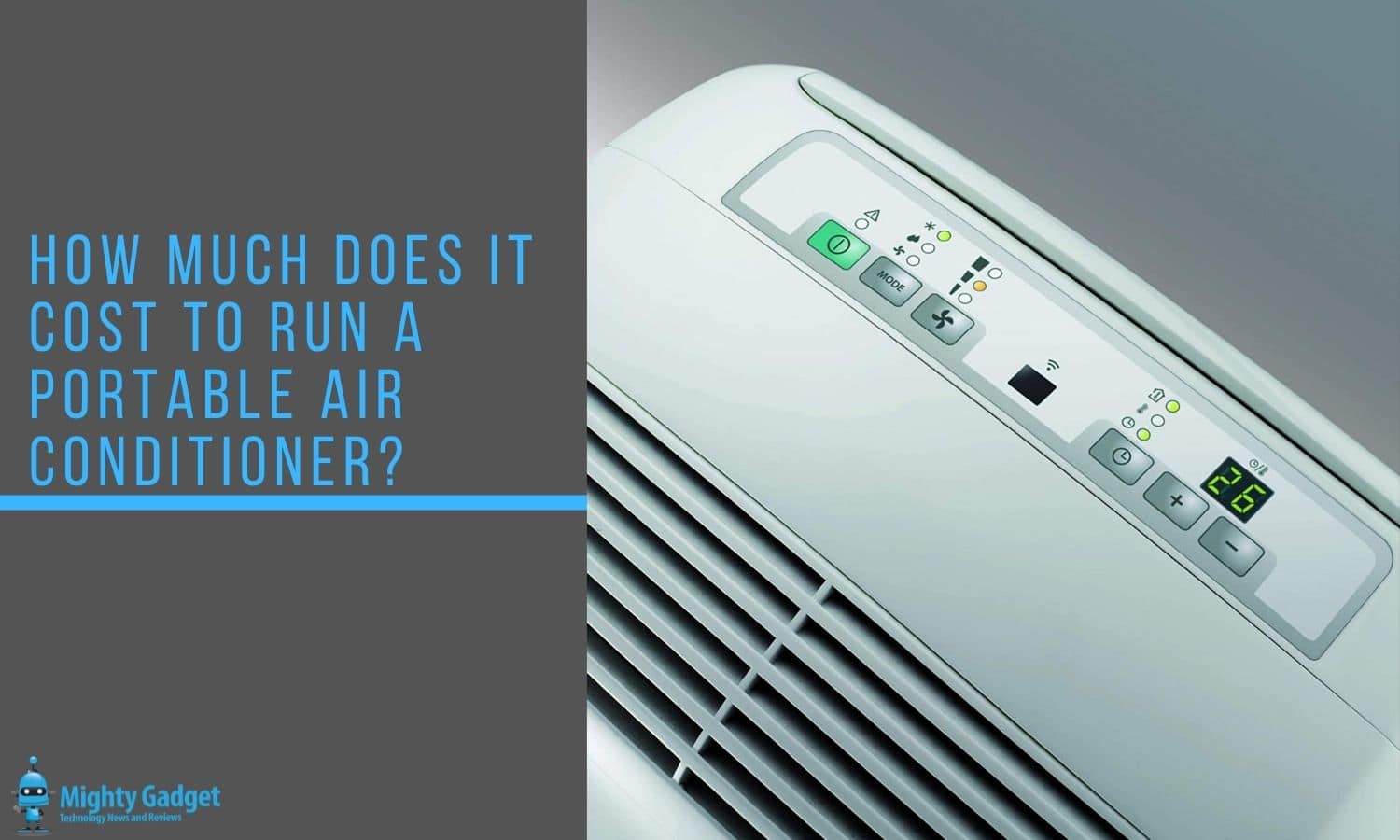








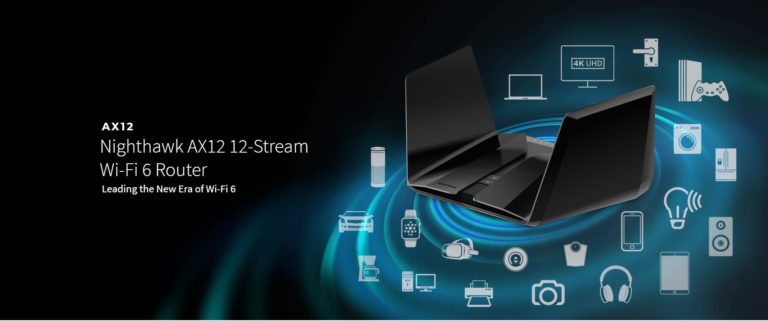
I have bought a DeLonghi EM82 portable a/c for my static caravan which is like an oven on hot sunny days. It is vented out of the side of the caravan and the hose wrapped in insulating material. With all windows and curtains closed the unit can cool the interior at the rate of about 4 deg C per hour down to 18 C but it feels cooler as soon as it switched on.
I don’t find it particularly noisy when in max cooling mode but I am not sure I could sleep with it on.
I have a similar model. I cant believe I didn’t know how to work out the cost before.
Mines 1114w, Bulb is now 27.1p/kwh
1114 ÷ 1000 x 27.1 = 30.19p I had mine on way more than I needed, I’ll certainly be more conscious next summer now knowing the price!